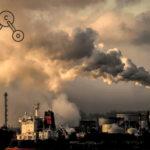The Economic Survey 2023-24, presented by Union Finance Minister Nirmala Sitharaman in Parliament, has identified climate change as the primary factor behind the soaring inflation in food items. Traditionally, the Economic Survey is unveiled a day before the Union Budget, offering crucial insights into the nation’s economic health and trends.
Rising Food Inflation
According to the survey, food inflation, measured by the Consumer Food Price Index (CFPI), has nearly doubled over the past three years. The CFPI is projected to rise from 3.8% in FY 2022 to 6.6% in FY 2023 and 7.5% in FY 2024. The survey attributes this significant increase in food prices to adverse weather conditions, stating: “Research indicates that the increase in food prices is due to climate change, heatwaves, uneven distribution of monsoon, unseasonal rains, hailstorms, torrential rains, and historical dry conditions.”
The survey describes the recent surge in food inflation as a global phenomenon, highlighting that the agriculture sector has been severely impacted by extreme weather events, low reservoir levels, and crop failures in FY 2023 and FY 2024. These factors have adversely affected agricultural production and subsequently, food prices.
Impact on Staples
Vegetables and pulses, two staple food items crucial to a family’s budget, have been most affected by erratic weather conditions. The survey points to the unprecedented price rise in specific vegetables as evidence of the link between adverse weather, climate change, and overall food inflation. For instance, the increase in tomato prices in July 2023 was attributed to weather changes during crop production, region-specific crop diseases such as white fly infestation, and the early arrival of monsoon rains in northern India.
Also read: India’s COVID-19 death toll vastly underreported, Study reveals
Similarly, the survey blames weather conditions for the rise in onion prices, citing multiple factors including the impact of rain on the quality of Rabi onions, delayed sowing during the Kharif crop, prolonged dry seasons, and trade-related factors from other countries.
Adverse Weather and Crop Loss
The survey also notes that unstable and extreme weather events have caused large-scale crop losses over the past two years. The prices of pulses, especially toor dal, have risen due to low production, which is attributed to adverse weather conditions. Additionally, weather constraints in southern states slowed the pace of sowing during the Rabi season, affecting the production of urad dal.
In a surprising finding, the Economic Survey calls for a reevaluation of the national strategy that traditionally encourages the migration of people from agriculture to non-agricultural activities. V Anantha Nageswaran, the Chief Economic Adviser in the finance ministry, noted that this strategy is not effectively creating jobs and wealth. He advocated a return to the agriculture sector to generate more employment and ensure economic growth, highlighting a trend of ‘reverse migration’ where people are returning to agriculture.
Nageswaran argued that technological advancements and geopolitical challenges are diminishing the prospects for job creation in the manufacturing and service sectors. He suggested that returning to agriculture could increase farmers’ incomes and create opportunities in food processing and imports. “These higher prices can be achieved by returning to the roots, i.e., farming, and making policies accordingly. The agriculture sector needs to be made fashionable and useful for the country’s rural youth,” he said.
The Economic Survey 2023-24 emphasizes the pressing need to address the impacts of climate change on agriculture to combat rising food inflation. With the Union Budget 2024-25 set to prioritize renewable energy, electric vehicles, and pollution control, it remains to be seen how the government will balance these initiatives with the urgent need to support the agricultural sector in the face of climate challenges.
Follow Climate India for more Environmental News. Connect with us on Facebook, Twitter, Instagram, and YouTube




